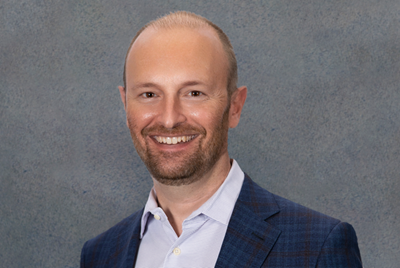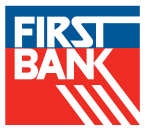As originally published in Family Business Magazine,
November/December 2022 issue
When most people think about family businesses, transformation and innovation are probably not the first things that come to mind. Doing things the same way as the prior generation did them is how most people probably think about family businesses, and perhaps it is even part of the lore of the family businesses. But as the readers of this magazine know, and perhaps have demonstrated in their own family businesses, continual transformation is necessary if your company is to thrive for generations.
 |
| Michael Dierberg, Chairman, FB Corporation and First Bank |
At my family’s business, we embrace our legacy as a 112 year-old family-owned bank, while transforming in major ways so that the company thrives not just in my generation, but the next as well. Our company, First Bank, started as a family business in 1910 and existed as a single-branch bank until my father took over from his father in the late 1960s. When my father took over, he launched the bank on a path of rapid growth, doubling in size every five years for decades and expanding into multiple states with branches in Missouri, Illinois and, starting in the 1990s, California.
Later, we transformed as an organization by approaching leadership differently than we had in the past. While my dad was CEO, the scale of the organization was such that we could rely on his skills and intellect as an entrepreneur to guide the company to success. For example, we never engaged in a strategic planning process, or had a real strategic plan, other than what was in my dad’s head.
As we grew as an organization and my dad stepped down as CEO and was succeeded by a non-family CEO, this changed. In 2013 we engaged in an extensive strategic planning process involving many employees throughout the company, and we defined for the first time our Vision, Mission and Values. We engaged all employees in the roll-out of our strategic plan, and have subsequently updated it several times while the Vision, Mission and Values have remained largely intact and still act as our North Star guiding the company.
One of the changes coming out of the strategic planning process was that we became very deliberate about celebrating the fact that we are a family business. It was not my family’s idea to embrace family-ownership as part of our brand identity, but instead this idea arose bottom-up from employees who said that it mattered to them and to our clients.
We also decided to focus as a bank on serving other family-owned businesses. We made this decision for several reasons. First, as a family-owned business we appreciate the unique challenges and opportunities of other family-owned businesses. Second, my own experience growing up in the family business led me to the conclusion, reinforced by discussions with many of our clients, that there is a big knowledge gap in family businesses that we can help address. I grew up asking many of the questions that this magazine asks and answers, but back then I didn’t know where to turn to for those answers. Many of our clients are in the same situation and may not even know the questions that they should ask. We concluded that we could help family businesses by starting a Center for Family Owned Businesses within the bank as a value-added service to our clients that would provide useful information through webinars and the other content we develop, and to connect our clients to each other and to outside resources.
In addition, as we looked out to the future, we decided to anchor our strategy to what is not changing rather than what is changing. Jeff Bezos once said that knowing what is not going to change in the next ten years is more important than knowing what is going to change. We have taken this advice and elected to focus our strategy on serving family-owned businesses because we think that human-to-human connections will always be at the core of these banking relationships and that we can thrive in nurturing these relationships. Conversely, consumer banking is dramatically changing and every year less driven by person-to-person interactions. What the consumer banking environment will be like in 10 to 20 years is anyone’s guess.
The fact that we have anchored our strategy to something that is not changing doesn’t mean that we can stand still as an organization. We still need to continually transform, including technologically. Providing strong digital offerings to our clients is table stakes in our industry. And what might be considered table stakes is constantly changing as the technology evolves, and our clients’ expectations increase. Thankfully, there is a robust ecosystem of hundreds if not thousands of Financial Technology (Fintech) providers serving banks across the country. This means that banks like First Bank don’t need to invent the technology to support our clients. Instead, we can rely on Fintechs to provide the same or similar technology used by the largest banks in the industry. This allows our family-owned bank, as a David fighting against Goliaths, to succeed in a particular realm – technology -- in which many people incorrectly assume that the Goliaths have a major advantage. The next step in our transformation will be to focus our efforts so that we can deliver technology to our family-owned clients that not even the big banks offer.
The last way we are transforming is through our physical offices. We are in the process or remodeling or relocating all of our branches to reduce our space needs, modernize the look of the branches, and allow the staff to focus more on sales and value-added advice rather than transactions. This includes introducing “interactive teller machines” that allow our clients to do transactions with the help of an on-screen assistant working offsite. This frees up our team in the branch from some of the dual control and staffing constraints under a traditional model, and allows our staff to go out to see clients rather than being tethered to the branch.
Furthermore, we are embarking on a very exciting project to build a new headquarters building in St. Louis. We started planning the new building during the pandemic, and designed it with a hybrid work environment in mind. The building is designed for what we view will be the primary purpose of the office going forward – a place to connect with clients and with each other.
We decided to build our new building on the site of our existing headquarters, which will necessitate knocking down the existing building. By the time you read this article, we will have knocked down our existing headquarters, built under my dad’s leadership in 1967. For my dad, who is still on the board of directors, I am sure that this will be a bittersweet moment given all of his memories of great people who worked there and the bank’s success during that time. But while we honor our legacy as a 112 year-old family-owned business, and the contribution of employees who served during that time, we are excited about the many ways we are transforming to allow us to thrive well into the future.


